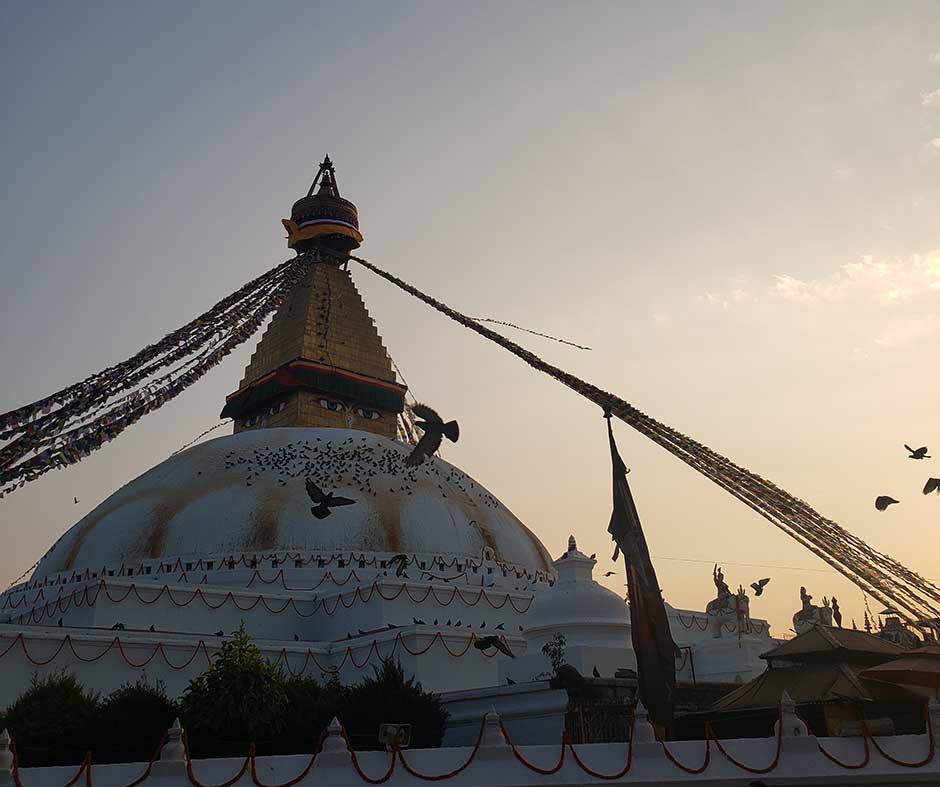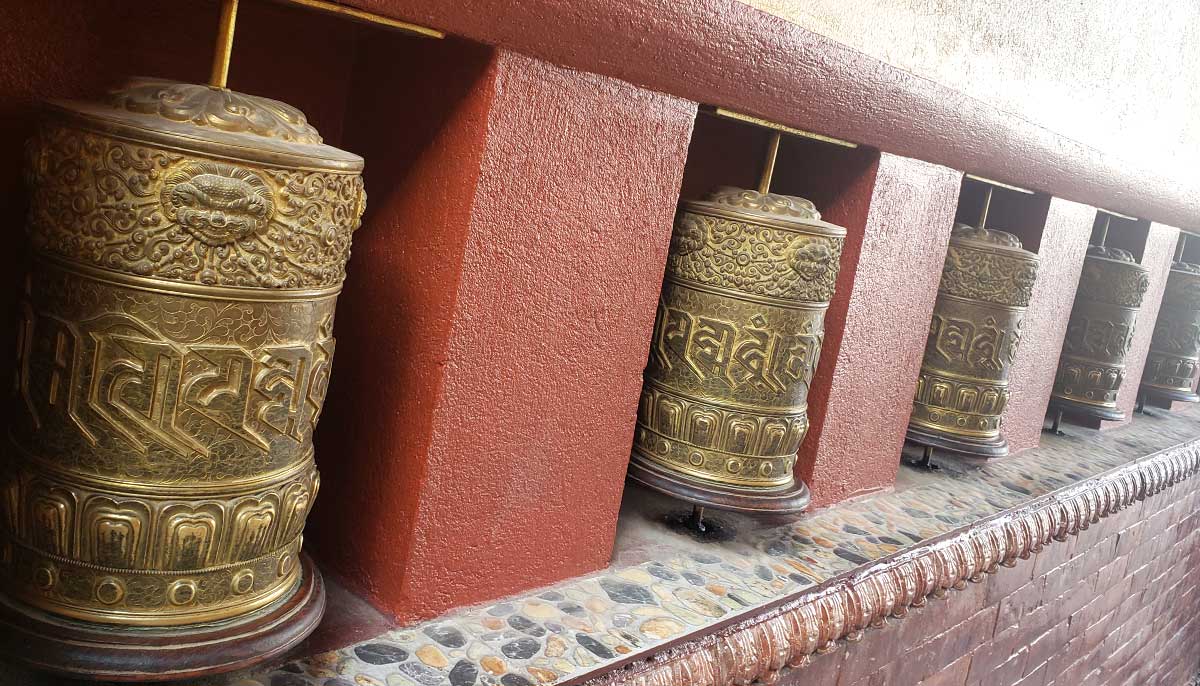Om Mani Padme Hum: a Deep Dive into this Mantra of Buddhism
Last Updated: January 01, 2025
TweetKey Takeaways
Is om mani padme hum a mantra? Or, just being hymned in religious terms! In this article, we will deep dive into the practice of Om Mani Padme Hum in Buddhism.
At its core, the Om Mani Padme Hum derived from the Sanskrit phrase, made of six syllables; om, mani, padme, hum. Each syllable carries its own meaning and holds a deep significance in both Hinduism (ॐ, ओम्,) and Buddhism due to its ability to heal one’s body, mind and soul. It is the most well-known of Buddhist mantras that brings peace and transformation to the one who chants it.
Often in FDIP context, several students and international volunteers seek sacred opportunities in Asian regions, because of their pursuit of spiritual enrichment, cultural immersion and personal development.
This blog is for those volunteers who want to explore the depths of the Buddhist mantra, its meaning and significance.
Understanding Om Mani Padme Hum
Om: often considered as the vibration of the universe, is the source of all sounds. It is made up of three syllables (A,U,M) which represent the body, speech and mind. Before chanting any mantra, om is always there. Therefore it is also considered as the opening of all mantras.
Mani: translates to “jewel” or “gem”. It represents compassion, wisdom and enlightenment. The jewel or gem that is talked about in this mantra is not an object but rather is the inner treasure or peace that people seek through meditation.
Please click here to get the complete details on available programs, activities, duration, cost, benefits and the rest of it.
Get More Info Now »
Padme: means “lotus flower” which represents purity and spiritual awakening. Although the lotuses root themselves in the mud, it still blooms beautifully without being soiled by mud. Therefore, it represents purity that cannot be touched or captured by negative emotions or things. In Nepal, some 500 BC ago, the guru Manjushree was caught with an image of illuminating flame in the middle of the lake in his meditative stage. He was attracted to this flame only to see a white illuminating object in the middle of the lake, floating above the murky waters was the big lotus flower. After draining the water from chobhar, in the Kirtpur, the object emerged from the water is called Swoyambhu Chaitya, it becomes a sigil of purity. In some pictures of Buddha, you will find him seated on an open lotus flower and also holding one in his hand as a gesture of purity and assurance to have no fear.
Hum: indicates “unity”. It is the symbol of union between compassion and wisdom. Wisdom and compassion are very much related to each other. One cannot have compassion without wisdom or wisdom without compassion. Therefore, one must possess both qualities to go through the path to liberation.
(According to the Dalai Lama, om mani padme hum means on the path of life with compassion and wisdom, we can achieve the pure body, speech and mind of a buddha.)
( And according to Osho, buddha is not a name of a god, it is a name of the awakened or enlightened one.)
The 14th Dalai Lama Tenzin Gyatso also states, “It is very good to recite the mantra Om mani padme hung, but while you are doing it, you should be thinking on its meaning, for the meaning of the six syllables is great and vast”
Here are the Top 5 commonly asked questions related to the Buddhist mantra and Buddhism by the volunteers
Please click here to get the complete details on available programs, activities, duration, cost, benefits and the rest of it.
Get More Info Now »
- Can you live with the monks in the monastery while volunteering?
- Are there specific volunteer programs or organizations that incorporate chanting "Om Mani Padme Hum" into their activities abroad?
- How can I volunteer at a Buddhist monastery?
- Can chanting "Om Mani Padme Hum" enhance cultural immersion and spiritual connection while volunteering overseas?
- What are the benefits of incorporating mindfulness practices like chanting "Om Mani Padme Hum" into volunteer work abroad?
History, origin and its significance
Om mani padme hum; the most cherished Buddhist mantra by both layman and lamas alike. Talking about its origin, it goes way back to ancient Tibetan Buddhism, particularly within the mahayana tradition. It is particularly associated with the four armed Shadakshari form of Avalokiteshvara( or Chenrezig in Tibetan) who represents the compassionate spirit of all buddhas, the bodhisattva of compassion.
It is believed that the creator of the mantra was none other than Avalokiteshvara, who revealed this powerful mantra for purifying the mind, cultivating compassion and overcoming obstacles on the path of enlightenment. Over time this mantra has become one of the most well known and powerful buddhist mantras worldwide.
Why do spiritual leaders embrace “om mani padme hum”?
It is no secret that this Buddhist mantra is very popular to individuals seeking meaning, purpose and connection in today’s fast paced world. But how did this mantra become a powerful tool for the enlightenment of spiritual leaders and gurus? Let’s learn together how.
As said in the above text,The mantra “om mani padme hum” is deeply rooted in the principle of compassion, transformation and purification which lies at the heart of Buddhist teachings. By chanting this mantra, spiritual leaders and gurus seek to cultivate and strengthen their inner sense of compassion towards all living beings. The mantra serves as a reminder of the importance of compassion in fostering harmony, understanding, and connection with others. They also chant this mantra as a form of spiritual practice to purify negative karmas and emotion from one’s body and soul and fully transform it by cultivating virtuous qualities such as loving-kindness, patience, and wisdom(like Buddha's). Through consistent practice, they aim to embody the qualities represented by Avalokiteshvara and awaken to higher states of awareness befitting for the title of a spiritual leader.
What are the benefits of chanting Om mani padme hum?

There are many spiritual leaders and gurus who claim that they have seen people walking out healthy without any medication even though they were diagnosed with serious health complications, by simply chanting “om” or “aum”. It is also believed and proven by many that the word “om” when chanted correctly helps to purify the negative energy or emotions from your body and soul which can also cure many seen or unseen diseases from your body. That being said, om mani padme hum when chanted correctly also offers a variety of potential spiritual and psychological benefits. Let’s discuss those benefits together
Cultivation of compassion
There are no such living beings who do not want to live a happy life. Whether it's an animal or a human being, everyone wants to live happily. Therefore when people develop compassion for others they won’t think or do any harmful things towards them. This Buddhist mantra serves as a reminder to cultivate compassion towards oneself and others.
Inner peace and calm
We live in such a fast paced world where people are constantly under pressure and stress related to daily lives and work and so on. One goes through all sorts of lengths to relax their body, mind and soul. Chanting Om Mani Padme Hum helps to quiet the mind, reduce stress, and promote relaxation, leading to a greater sense of emotional well-being.
Enhances concentration and focus
Chanting the mantra correctly requires a lot of attention and concentration to the rhythm and sound of the syllable and the posture of your tongue. This can help improve your level of concentration and mental clarity which is very important in day to day life making it an effective meditation practice for calming the mind and developing mindfulness.
Promotion of healing
It is believed in many religions and cultures that our body consists of chakras and when those chakras are triggered it can heal one’s body, mind and soul. Same goes with the chanting of om mani padme om. Many practitioners believe that chanting this mantra can have healing effects on our body, mind and soul. The vibrations produced by chanting the mantra are thought to ring the chakras(energy center) of the body promoting balance, peace and relaxation.
In conclusion, if you are also interested in experiencing an individual path to enlightenment or spiritual awakening, may the chanting of this mantra serve as a guiding light, leading you toward greater understanding, compassion, mindfulness and inner peace in your lives and in the world around you.
Please click here to get the complete details on available programs, activities, duration, cost, benefits and the rest of it.
Get More Info Now »



